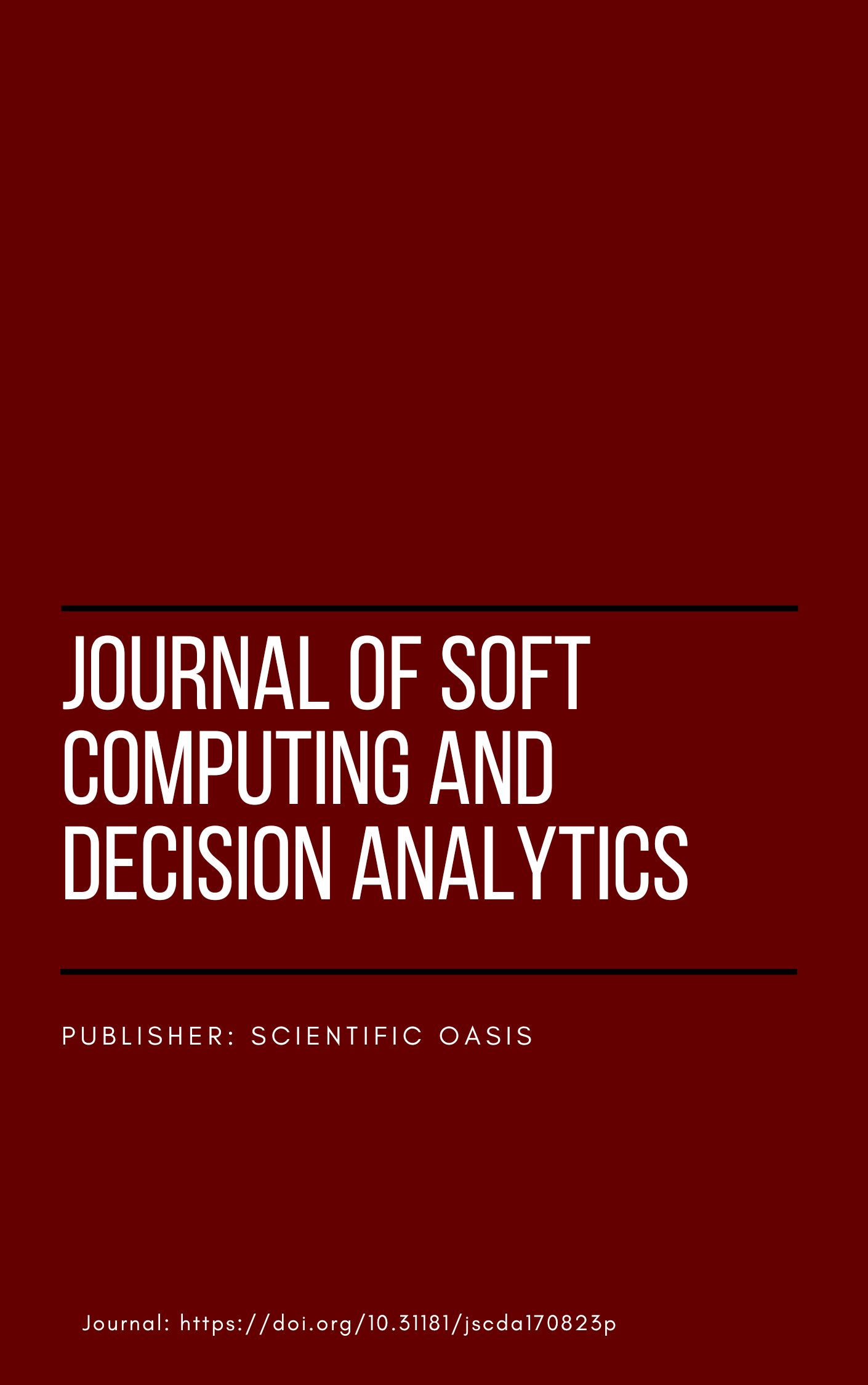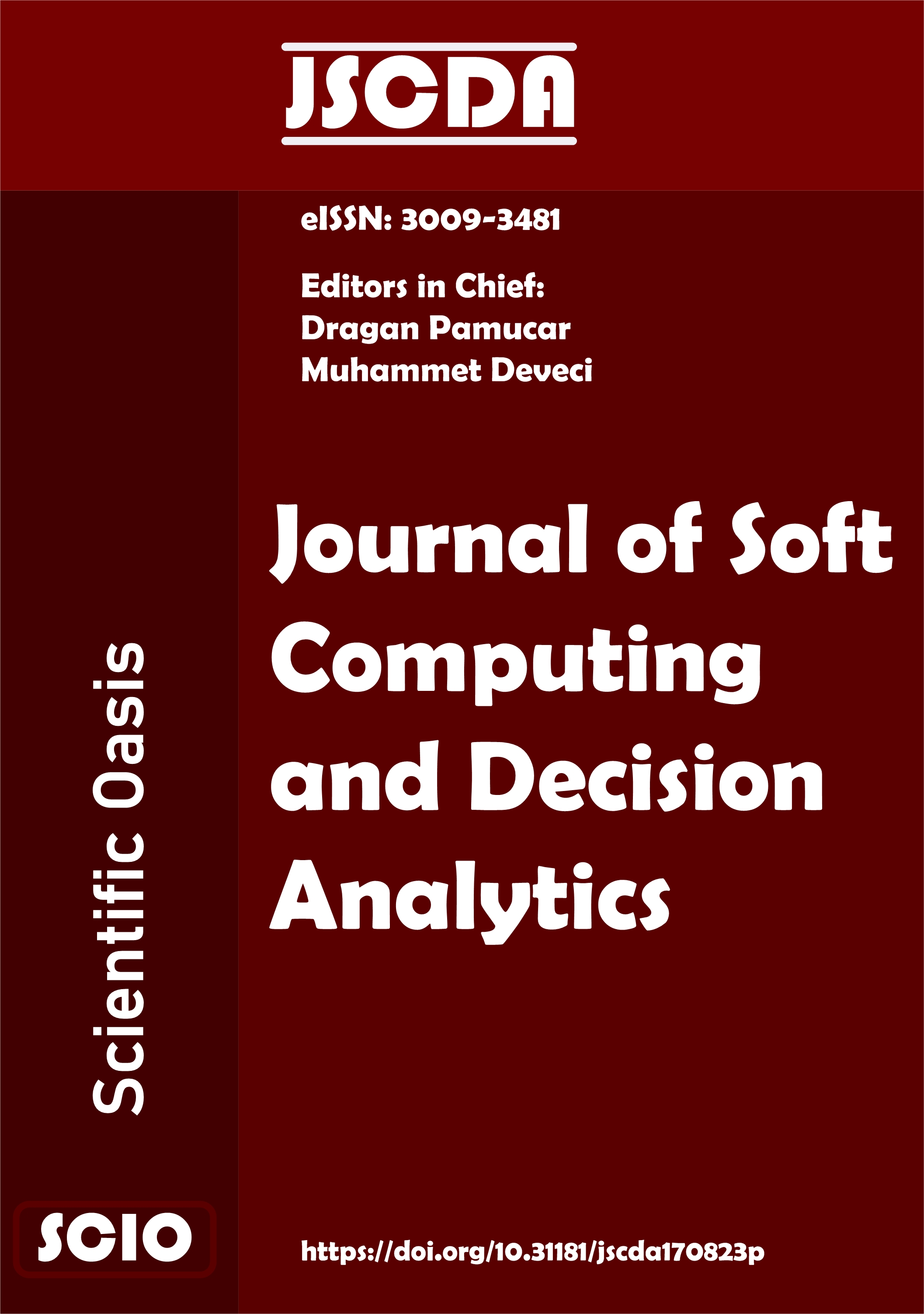Mathematical Predicted Values Based on Sombor Descriptors for Cyclooctane Chains
DOI:
https://doi.org/10.31181/jscda21202434Keywords:
Cyclooctane Chains, Sombor descriptor, Topological descriptorsAbstract
Cyclooctane group is a significant kind of cycloalkane in the field of computing chemistry. These compounds are considered macro cyclic aromatic hydrocarbons. The intriguing properties and conformational behaviors of Cyclooctane have led to their extensive utilization across various uses in both the alchemical and organic production. In our research, we explore the constructional attributes of Cyclooctane group by examining their primary graph framework. We take into account the unsystematically group with various possibilities and proceed to calculate the mathematical expectation structural value of a particular structure specific to Cyclooctane. These descriptors are derived from a partition based on atom degrees and a more detailed partition called sum-degree partition. Furthermore, we conduct a comparative analysis encompassing various descriptors that are a part of our study. Additionally, we highlight distinctive categories of Cyclooctane chains that exhibit specific values within these descriptors.
References
Kabir, M. F., & Roy, S. (2023). Hazard perception test among young inexperienced drivers and risk analysis while driving through a T-junction. Decision Making: Applications in Management and Engineering, 6(1), 1-17. https://doi.org/10.31181/dmame181221015k
Strunk, W., Jr., & White, E. B. (2000). The elements of style. (4th ed.). New York: Longman, (Chapter 4). Reference to a chapter in an edited book: Mettam, G. R., & Adams, L. B. (2009). How to prepare an electronic version of your article. In B. S. Jones, & R. Z. Smith (Eds.), Introduction to the electronic age (pp. 281–304). New York: E-Publishing Inc.
Kabir, M. F., & Roy, S. (2023). Hazard perception test among young inexperienced drivers and risk analysis while driving through a T-junction. Decision Making: Applications in Management and Engineering, 6(1), 1-17. https://doi.org/10.31181/dmame181221015k
Göttker-Schnetmann, I., & Brookhart, M. (2004). Mechanistic studies of the transfer dehydrogenation of cyclooctane catalyzed by iridium bis (phosphinite) p-XPCP pincer complexes. Journal of the American Chemical Society, 126(30), 9330-9338. https://doi.org/10.1021/ja048393f
Chan, Y. W., & Chan, K. S. (2010). Metalloradical-catalyzed aliphatic carbon− carbon activation of cyclooctane. Journal of the American Chemical Society, 132(20), 6920-69. https://doi.org/10.1021/ja101586w
Satoh, D., Matsuhashi, H., Nakamura, H., & Arata, K. (2003). Isomerization of cycloheptane, cyclooctane, and cyclodecane catalyzed by sulfated zirconia—comparison with open-chain alkanes. Physical Chemistry Chemical Physics, 5(19), 4343-4349.
Bharadwaj, R.K., (2000). Conformational properties of cyclooctane: a molecular dynamics simulation study. Molecular Physics, 98(4), 211–218. https://doi.org/10.1080/00268970009483284
Anet, F., (2007). Dynamics of eight-membered rings in the cylooctane class. Dynamic Chemistry, 169–220. https://doi.org/10.1007/3-540-06471-0
Martin, S., Thompson, A., Coutsisas, E.A., & Watson, J.P. (2010). Topology of cyclo-octane energy landscape. Journal of Physical Chemistry. 132(23), 234115. https://doi.org/10.1063/1.3445267
Asghar, S. Akhter, S. Malik, M. A., & Binyamin, A. (2021). Szeged-type indices of subdivision vertex-edge join (SVE-join), Main Group Metal Chemistry, 44 (1), 82-91. https://doi.org/10.1515/mgmc-2021-0011
Aranda, A., Diaz-De-Mera, Y., Bravo, I., & Morales, L., (2007). Cyclooctane tropospheric degradation initiated by reaction with C1 atoms. Environmental Science and Pollution Research, 14(3), 176–181. https://doi.org/10.1065/espr2006.12.374
Neuenschwander, U., & Hermans, I., (2011). The conformations of cyclooctene: consequences for epoxidation chemistry. The Journal of Organic Chemistry, 76, 10236–10240. https://doi.org/10.1021/jo202176j
Theyssena, N., & Leitner, W., (2002). Selective oxidation of cyclooctane to cyclootanone with molecular oxygen in the presence of compressed carbon dioxide. Chemical Communications journal, 5, 410–411.
Gutman, I., (2021). Geometric approach to degree-based topological indices: Sombor indices. MATCH Communications in Mathematical and in Computer Chemistry, 86, 11–16.
Kavitha, S.R.J. , Abraham, J., Arockiaraj, M., Jency, J., & Balasubramanian, K., (2021). Topological characterization and graph entropies of tessellations of kekulene structures: Existence of isentropic structures and applications to thermochemistry, NMR and ESR. Journal of Physical Chemistry-A, 125(36), 8140–8158. https://doi.org/10.1021/acs.jpca.1c06264
Arockiaraj, M., Jency, J., Abraham, J., Kavitha, S.R.J., & Balasubramanian, K., (2022). Two-dimentional coronene fractal structures: topological entropy measures, energetics, NMR and ESR spectroscopic patterns and existence of isentropic structures. Molecular Physcis, 120(11), e2079568. https://doi.org/10.1.80/00268976.2022.2079568
Ranjini, P.S., Lokesha, V., & Usha, A., (2013). Relation between phenylene and hexagonal squeeze using harmonic index. Int. Journal of Graph Theory, 1(4), 116–121.
Wei, S., Ke, X., & Hao, G., (2018). Comparing the expected values of atom-bond connectivity and geometric-arithmetic indices in random spiro chains. Journal of Inequalities and Applications, 2018, 45.
Huang, G., Kuang, M., & Deng, H., (2015). The expected values of Kirchhoff indices in the random polyphenyl and spiro chains. Ars Mathematica Contemporanea, 9(2), 207–217.
Jahanbani, A., (2022). The expected values of the first Zagreb and Randic indices in random polyphenyl chains. Polycyclic Aromatic Compound, 42(4), 1851–1860. https://doi.org/10.1080/10406638.2020.1809472
Raza, Z., (2022). The harmonic and second Zagreb indices in random polyphenyl and spiro chains. Polycyclic Aromatic Compound, 42(3), 671–680. https://doi.org/10.1080/10406638.2020.1749089
Raza, Z., Naz, K., & Ahmad, S., (2022). Expected values of molecular descriptors in random polyphenyl chain. Emerging Science Journal, 6(1), 151–165. https://doi.org/10.28991/ESJ-2022-06-01-012
Raza, Z., & Imran, M., (2021). Expected values of some molecular descriptors in random cyclooctane chains. Symmetry, 13(11), 2197. https://doi.org/10.3390/sym13112197
Raza, Z., (2020). The expected values of arithmetic bond connectivity and geometric indices in random phenylene chains. Heliyon, 6(7), e04479. https://doi.org/10.1016/j.heliyon.2020.e04479
Wei, S., & Shiu, W.C., (2019). Enumeration of Wiener indices in random polygonal chains. Journal of Mathematical Analysis and Applications, 469(2), 537–548. https://doi.org/10.1016/j.jmaa.2018.09.027
Wei, S., Ke, X., & Wang, Y., (2018). Wiener indices in random cyclooctane chains. Wuhan University Journal of Natural Sciences, 23, 498–502.
Yang, W., & Zhang, F., (2012). Wiener index in random polyphenyl chains. MATCH Communications in Mathematical and in Computer Chemistry, 68, 371–376.
Liu, J.B., Gu, J.J., & Wang, K., (2023). The expected values for the Gutman index, Schultz index, and some Sombor indices of a random cyclooctane chain. International Journal of Quantum Chemistry, 123(3), e27022.
Liu, J.B., Zhang, T., Wang, Y., & Lin, W., (2022). The Kirchhoff index and spanning trees of M¨obius/cylinder octagonal chain. Discrete Applied Mathematics, 307, 22–31. https://doi.org/10.1016/j.dam.2021.10.004
Imran, M., Luo, R., Jamil, M. k., Azeem, M., & Khawaja Muhammad Fahd., M. K. (2022). Geometric perspective to Degree–Based topological indices of supramolecular chain. Result in Engineering, 16, 100716. https://doi.org/10.1016/j.rineng.2022.100716
Imran, M., Ismail, R., Azeem, M., Jamil, M. K., & Al-Sabri, E. H. A. (2023). Sombor topological indices for different nanostructures. Heliyon, 9(10). https://doi.org/10.1016/j.heliyon.2023.e20600
Downloads
Published
Data Availability Statement
Not available.
Issue
Section
License
Copyright (c) 2024 Scientific Oasis

This work is licensed under a Creative Commons Attribution-NonCommercial-NoDerivatives 4.0 International License.
















